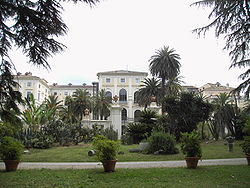 With the craziness of the wedding now over, I’ve finally had the time again to indulge in one of my favorite pastimes: reading. My chosen genre of the moment is history, with a particular emphasis on Renaissance Italy (shocker, I know). For the past month I’ve been inhaling books as fast as I can, which has perhaps explained my silence on the blog waves. The book I’ve had my nose in these past few days has been Sarah Bradford’s meticulous history of the life of Lucrezia Borgia. One of my all-time favorite historical characters, this gusty, intelligent and (if contemporary chroniclers are to be believed) absolutely wanton woman was the beloved daughter of the Papa Cattivo (evil pope) Alexander VI, aka Rodrigo Borgia. The rumors are salacious, but the truth is no less fascinating and I’ve been gobbling this book up in every free moment. She was audacious, she was a natural blonde, and she was passionately adored by some of the most powerful men of her time.
With the craziness of the wedding now over, I’ve finally had the time again to indulge in one of my favorite pastimes: reading. My chosen genre of the moment is history, with a particular emphasis on Renaissance Italy (shocker, I know). For the past month I’ve been inhaling books as fast as I can, which has perhaps explained my silence on the blog waves. The book I’ve had my nose in these past few days has been Sarah Bradford’s meticulous history of the life of Lucrezia Borgia. One of my all-time favorite historical characters, this gusty, intelligent and (if contemporary chroniclers are to be believed) absolutely wanton woman was the beloved daughter of the Papa Cattivo (evil pope) Alexander VI, aka Rodrigo Borgia. The rumors are salacious, but the truth is no less fascinating and I’ve been gobbling this book up in every free moment. She was audacious, she was a natural blonde, and she was passionately adored by some of the most powerful men of her time. On a different yet related side note, last night the Maritino (little husband, I think I simply must start referring to him thus) and I attended a concert at Palazzo Corsini. I have a special relationship with this Baroque palace and make a habit of stopping by to breathe in all the gorgeousness of the place every few months. But the concert last night brought my love affair with Palazzo Corsini to a higher level.
On a different yet related side note, last night the Maritino (little husband, I think I simply must start referring to him thus) and I attended a concert at Palazzo Corsini. I have a special relationship with this Baroque palace and make a habit of stopping by to breathe in all the gorgeousness of the place every few months. But the concert last night brought my love affair with Palazzo Corsini to a higher level.The group, Insieme Vocale e Strumentale Chiaroscuro, performed works of Spanish music from the 16th century. I must admit, as much as I lust after Renaissance art, I have never cared for Renaissance music one bit. I suffered through that semester at conservatory, counting the days until we would begin studying Verdi and Puccini (even Handel would have been a pleasant respite!). Last night, however, in that setting (although admittedly, what you see today of the palazzo is clearly late Baroque, bordering on Rococo, although the shell of the palace is much older), on a terrace lit with candles, and transplanted palm trees swaying in the background, the music made much more sense.
As I listened to the simple harmonies of the viola da gamba, lute, and wooden flutes, the soprano, alto, tenor and bass voices singing Spanish poetry, I felt as though transported to the time of Lucrezia herself. Half Spanish, and at the height of her beauty and fascination around 1500, Lucrezia’s essence seemed to be floating in the air. Some of these pieces could have been the same songs she herself enjoyed, listened to, danced to. What must court life have been like five hundred years ago for the precocious teenage daughter of the Pope cavorting around the Vatican and later the much-feted Duchess of Ferrara?
My fantasy of having my own private time machine may be unlikely to materialize, but occasionally, on rare nights such as this, it is possible to go back in time, even if only in your imagination. One of the reasons I live in Rome is because time travel is more possible here than any other place on earth.
Beautifully written, Tiffany. I can hear the renaissance music in your writing and picture the candlelit setting. Was Maritino with you? My best to you both.
ReplyDeleteDid you get my email with places to visit in US?
Don